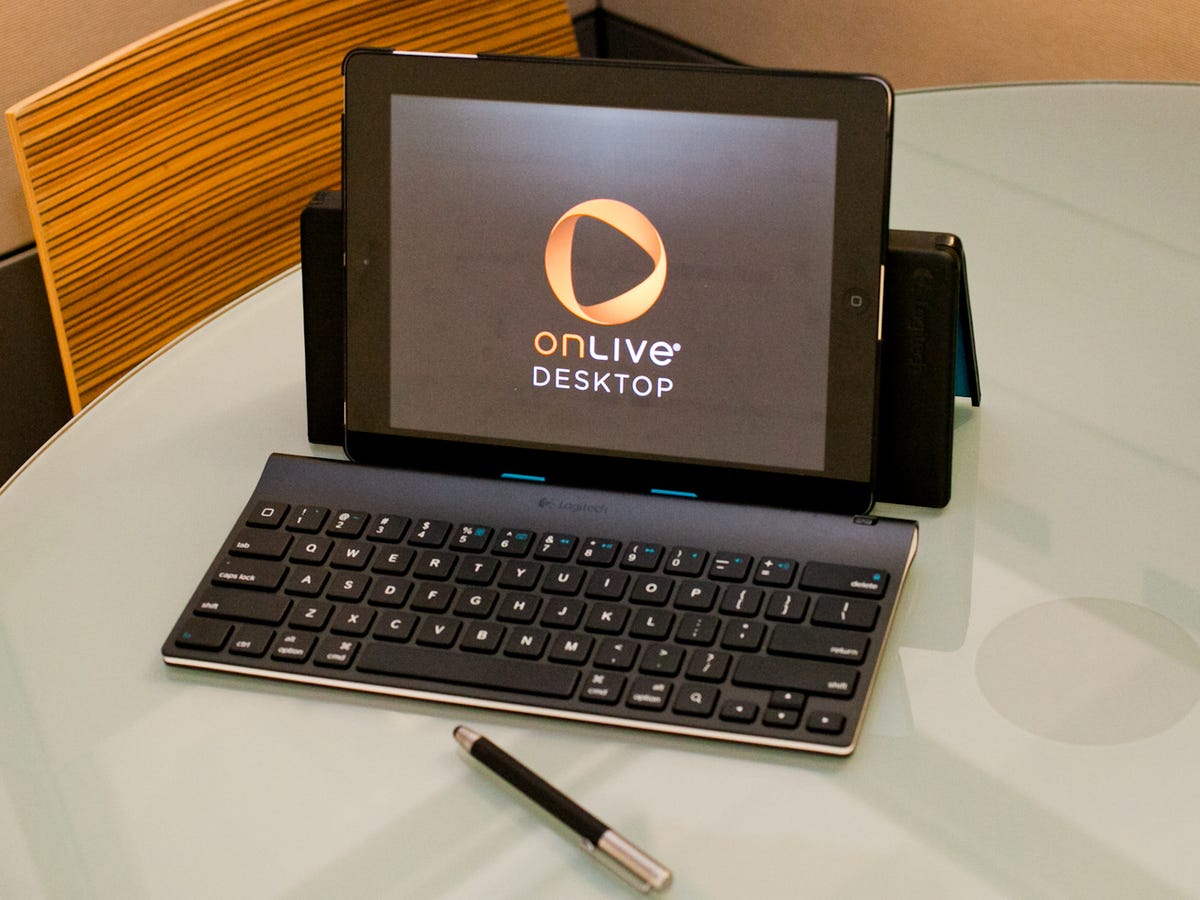

Now playing:
Watch this:
OnLive Desktop Plus for iPad
2:30
During CES 2012, the surprise appearance of OnLive Desktop was an intriguing idea for Windows lovers: rent a Windows 7 computer remotely and stream the whole experience to your iPad.
Helping the cause for the first iteration of OnLive Desktop was its price: free. That version had only 2GB of cloud storage, and the Windows 7 environment ran only a suite of Microsoft Office applications (sans Outlook), but for the cloud-curious and those who lack a word processor for their iPad, OnLive’s streaming solution is a clever way to explore a mobile office.
OnLive was slated to release a Pro version with more dedicated servers, 50GB of storage, and access to an assortment of other applications, including a Flash-enabled browser, for $9.99 a month; that’s hardly inexpensive, and likely to appeal largely to business executives with expense accounts. Today’s launch of OnLive Desktop Plus is a surprise half-step: for $4.99 a month, users get the same 2GB of storage, but added access to that long-promised Flash browser; Microsoft Internet Explorer is included; and users also get Adobe PDF compatibility, and Dropbox support.

Scott Stein
I went through a demonstration of OnLive Desktop Plus with Steve Perlman, OnLive’s president, CEO, and founder, who was adamant that this software would make the iPad the fastest Flash browser in existence. In a sense, he’s correct: OnLive’s high-speed hard-wired servers do the bulk of the Flash-browsing processing, speeding through load times far faster than most home Internet connections would ever accomplish. From there, the browsing experience is streamed to the iPad with the same technology behind OnLive’s streaming-game service. The net effect is, according to Perlman, more data-usage efficient for the end user than standard Web browsing.


Scott Stein/CNET
In testing the service via a provisional test account prerelease, that held true for most Flash sites I looked at, including CBS and Hulu. Incidentally, because this is cloud-based streaming, access to a Flash-enabled PC browser, there are also no Flash restrictions in effect like there tend to be, say, when visiting Hulu from an Android tablet.
Related stories
- OnLive Desktop brings Windows 7 to the iPad
- Review: OnLive MicroConsole
- Hands-on: OnLive gaming on the iPad
- Review: Logitech Tablet Keyboard for iPad
Internet Explorer will save bookmarks, and even download files. That’s its chief advantage over the iPad’s baked-in Safari browser, which won’t allow downloads. OnLive Desktop’s service has restrictions, however: it won’t download EXE files (according to Perlman, in order to avoid malware). Also, while Internet Explorer will save bookmarks between sessions, the entire Windows 7 operating system you access in OnLive Desktop will reset for the next session. Files will automatically save in a cloud folder that can be accessed via a Web browser, and OnLive Desktop Plus adds Dropbox compatibility, but you can forget about customizing your Windows 7 settings. Once again, according to OnLive, this is to keep subscription prices low and avoid extra maintenance. You’re renting a hotel room that gets cleaned each night.
The other inevitable problem with cloud access: you’re only as good as your home wireless access. OnLive Desktop Plus worked well from my home wireless connection and at my parents’ house, but at work over our admittedly shaky Wi-Fi access point, I got a message that the network wasn’t strong enough to run OnLive Desktop. It took relocating to our stronger Wi-Fi access point in the CNET TV lab to get the service to run again.


Sarah Tew/CNET
OnLive Desktop can also play videos and music stored in the cloud, or even play games; a few Microsoft Surface apps ran decently, and Flash games did indeed work in IE (as did Flash ads). Interaction with the Web browser, and with all of OnLive Desktop, is accomplished via touch only. You could use a stylus for added comfort, but the iPad doesn’t support a mouse; it’s touch or nothing. OnLive Desktop does, however, support Bluetooth keyboards. I hooked up the Logitech Tablet Keyboard and typed away on both Microsoft Word and Google Docs within Internet Explorer. The experiment worked, although with more lag between keystrokes than I’d prefer. Neither the stylus nor the keyboard is required; an onscreen keyboard offers a nonideal but workable solution, and finger-touching works as well as stylus use.
Android users will be luckier: a future version of Onlive Desktop does indeed have mouse support, but it will support only clicking one button.


Scott Stein/CNET
So, here’s the $5-a-month question: are you simply better using one of the iPad’s many office productivity apps and the built-in Safari browser instead? Well, for those dependent on a Flash Web site or the need to download and share attachments, OnLive Desktop Plus could be an interesting experiment. Even for a month or so, it could be a viable way to rent a PC when on vacation or working remotely. However, even without rumors of Microsoft Office emerging on the iPad, there are too many other ways to get work done on an iPad to make OnLive Desktop Plus essential. Do try the free version, though, and decide for yourself (minus Flash browsing, of course).
OnLive Desktop Plus will eventually be available for Android, Mac, PC, smartphone, and monitor/TV via the OnLive MicroConsole. OnLive Desktop Pro will add 50GB of storage and access to a selection of other, as-yet-unspecified apps. OnLive’s chief software partners are Adobe, Microsoft and Autodesk (Maya was demoed briefly), which points toward which types we’re likely to see.
OnLive Desktop is currently available from the App Store.



